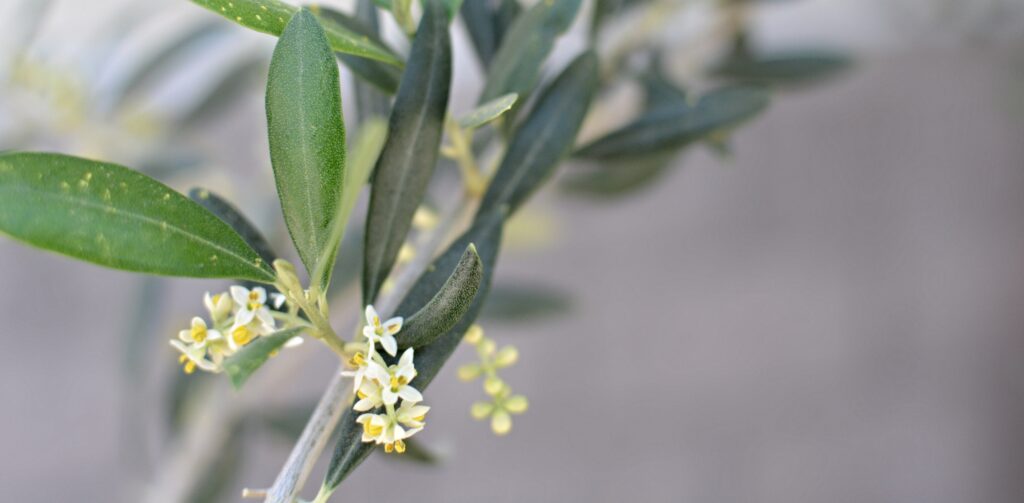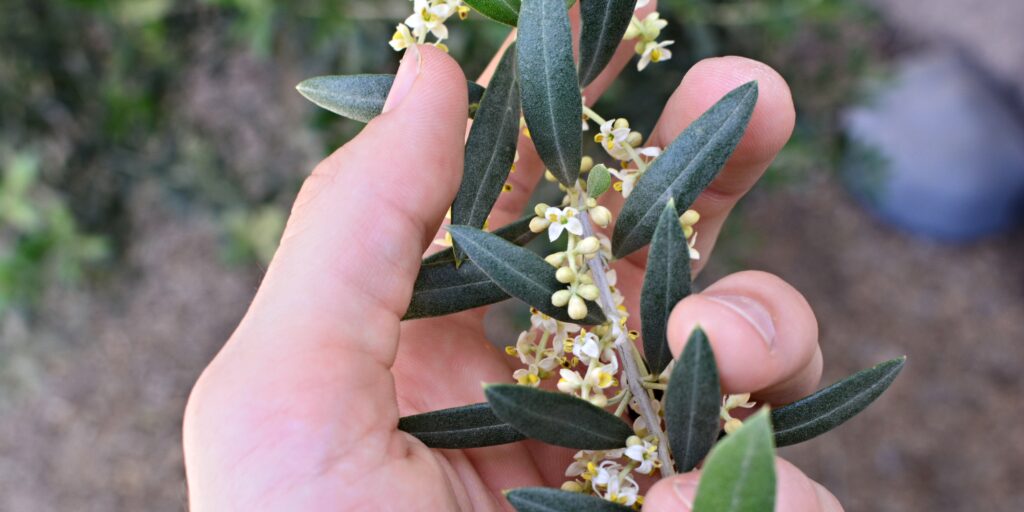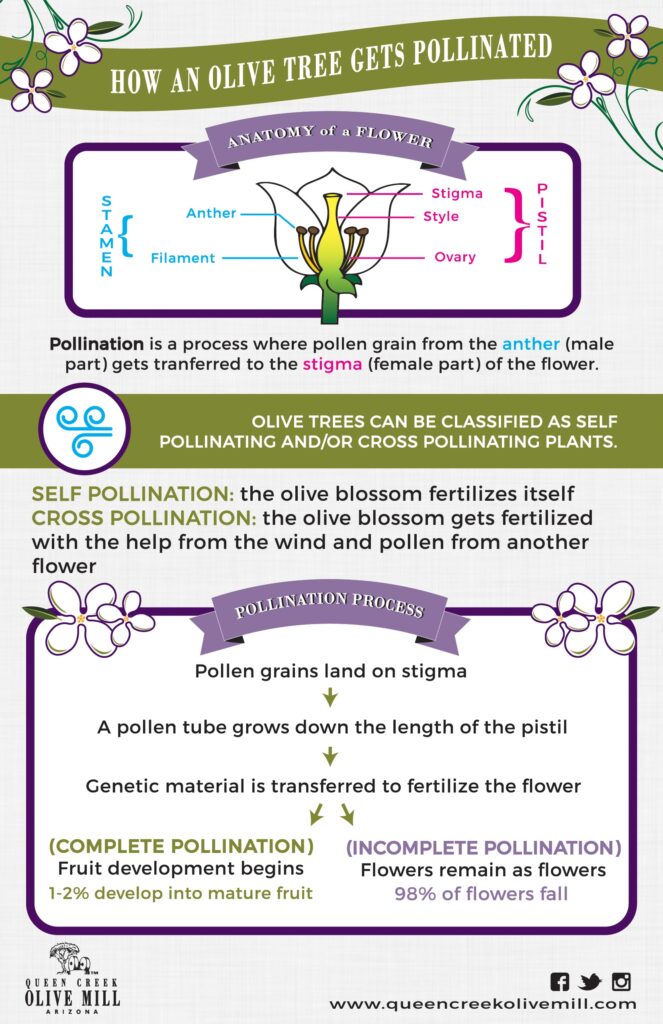
Pollination…it’s a beautiful thing! In honor of our annual Olive Blossom Festival (always held in April), where we celebrate the awesome blossoms on our olive trees, we decided that it would be a good idea to teach you how an olive actually becomes an olive – the act of pollination.
Pollination is the transfer of pollen from the anther to the stigma thereby enabling fertilization and reproduction. There are two main types of pollination called self-pollination and cross-pollination. Self-pollination requires no agent, while wind is an essential part of cross-pollination. Olive pollination occurs by either self-pollination or by cross-pollination, depending upon the variety of the tree.
Self-pollinating olive trees: Frantoio, Koroneiki, Manzanillo
Good pollinators to other trees: Frantoio, Arbequina, Leccino, Arbosano, Pendolino
Olive trees that require a pollinator: Coratina, Picholine (preferable Leccino, Manzanillo)

Pollination is important because it leads to the production of fruits we can eat, and seeds that will create more plants. Pollination begins with flowers. A typical olive tree blossoms between March and April giving us dainty, fragrant, cream colored flowers. 98% of these flowers drop to the ground, meaning the pollination was incomplete, and only 1-2% of them develop into fruit.
Here is how an olive tree gets pollinated :

Who knew that 98% of those flowers would never have the chance to turn into plump, bitter olives? We are so grateful every year when we see our trees blossom – and the fruit development that happens in the months to follow. Pollination…it’s a beautiful thing!

Leave a Reply